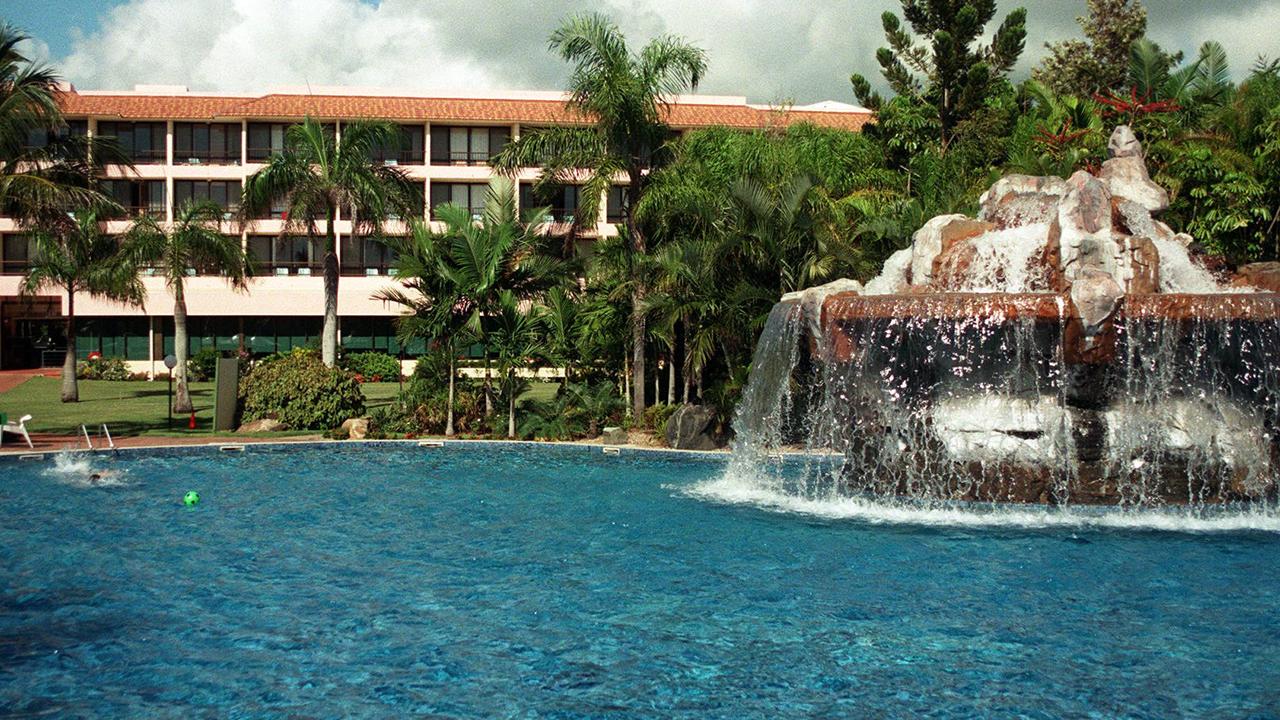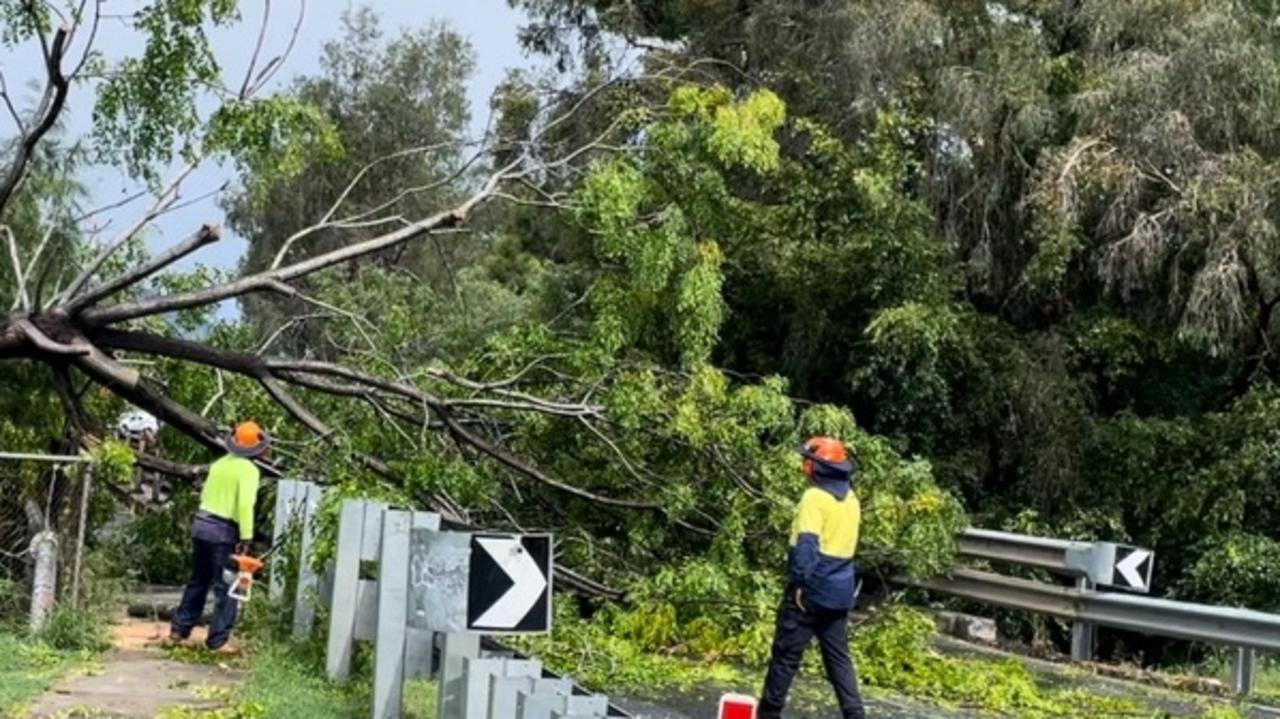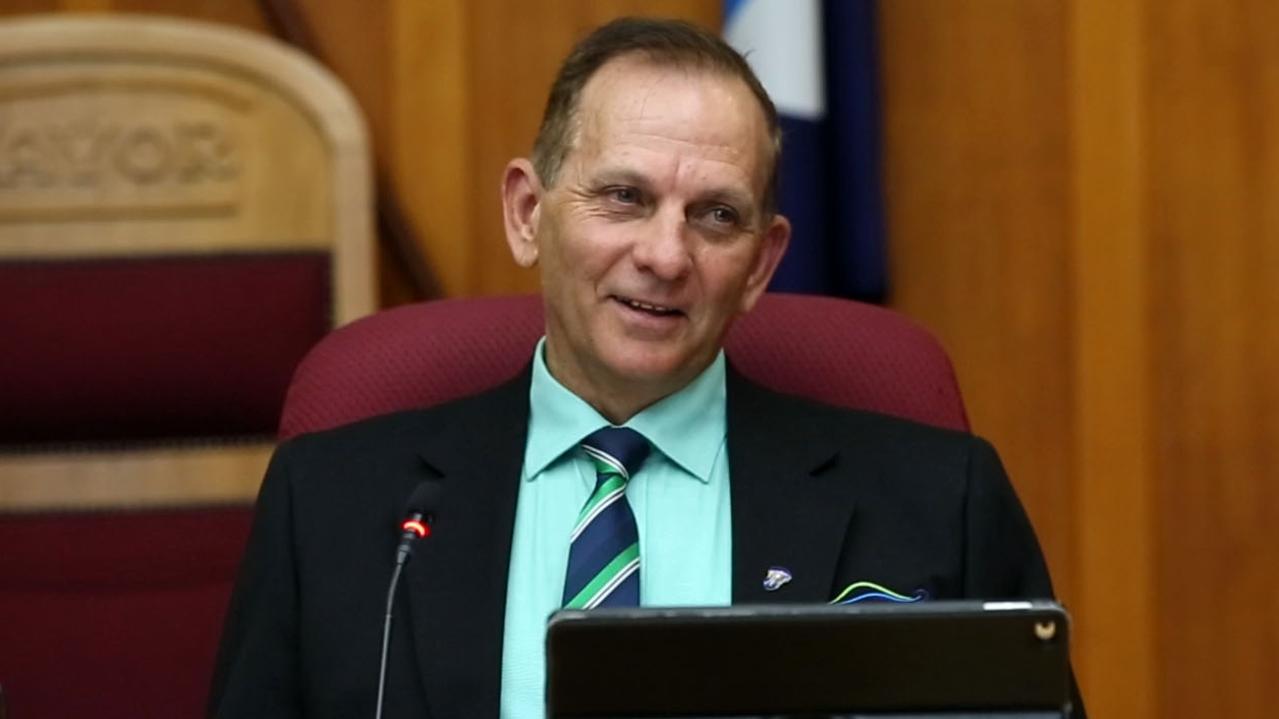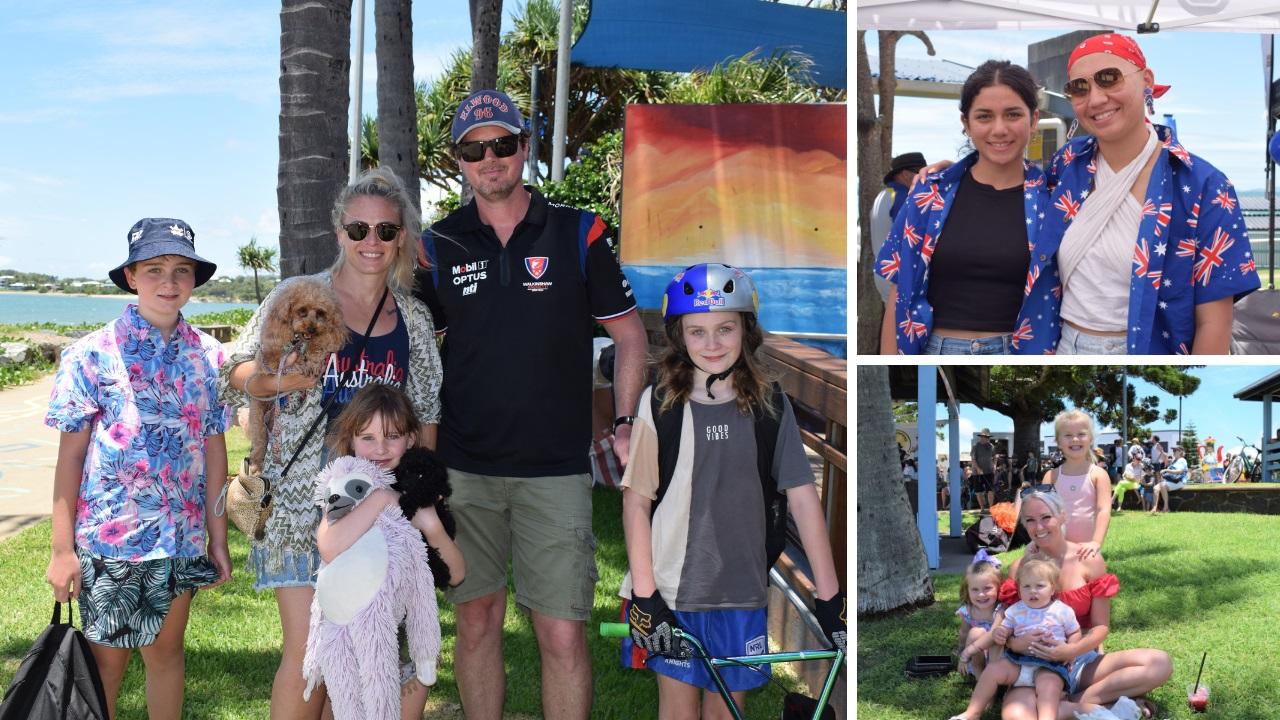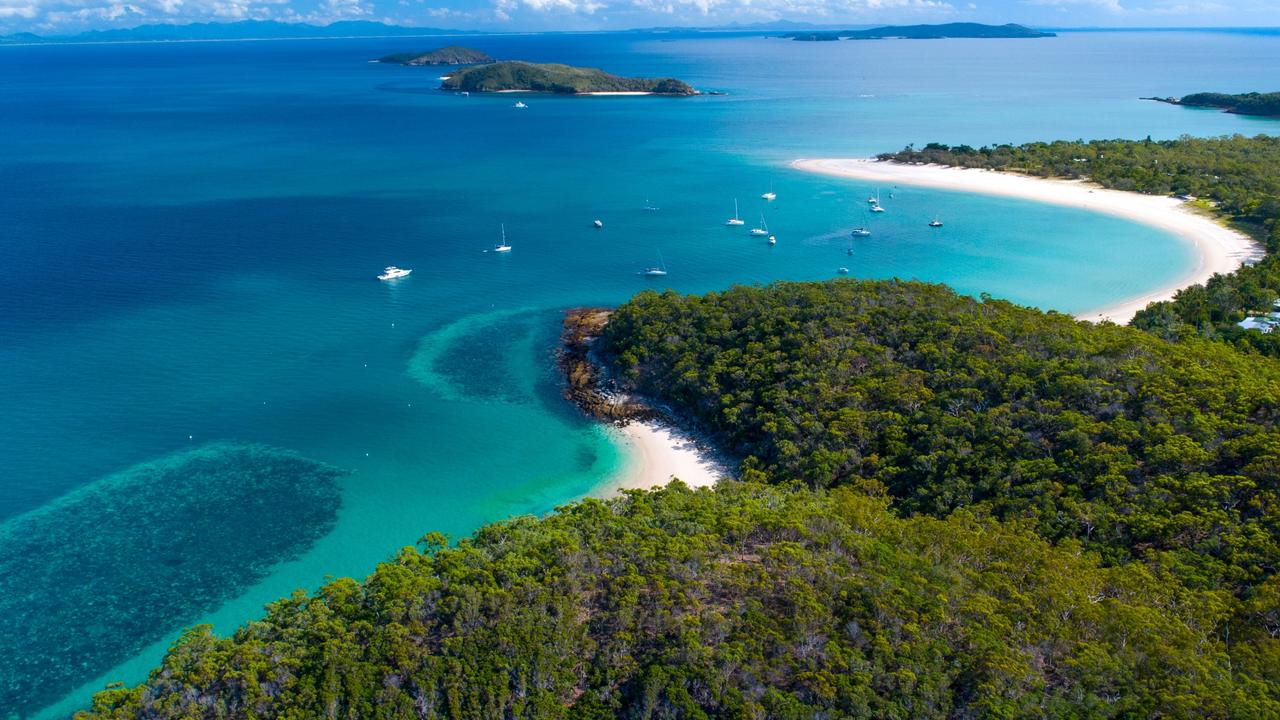Inside new Central and Western Queensland infrastructure plan
A new plan has been unveiled to drive economic transformation outside Brisbane and ensure regional Queensland communities thrive for the next 20 years and beyond.
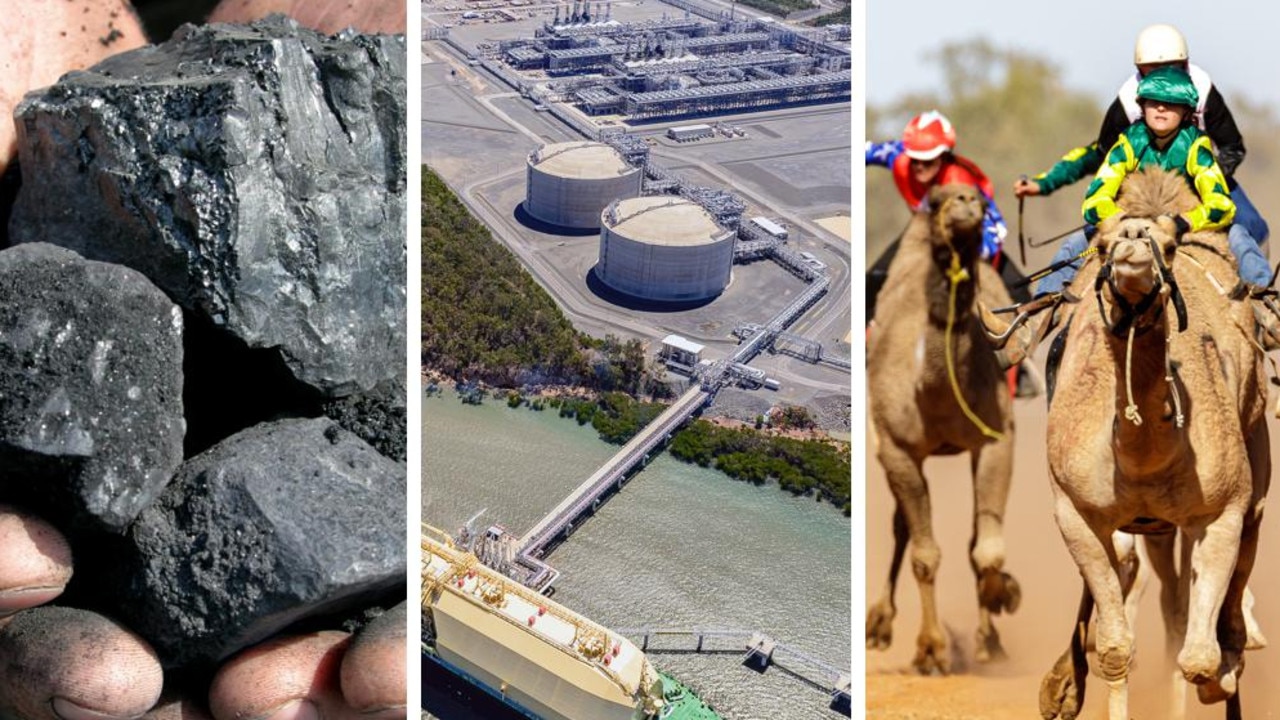
Community News
Don't miss out on the headlines from Community News. Followed categories will be added to My News.
Central and Western Queensland is the first region in Queensland to receive a new infrastructure plan mapping out priority projects for the next 20 years.
Planning Minister Steven Miles said as the state’s largest region, it was chosen to lead what would be a statewide rollout of seven plans to “drive regional economic transformation and liveable communities”.
Each plan supports the 2022 State Infrastructure Strategy with the Central and Western Queensland Infrastructure plan identifying decarbonisation as one of four key aims.
The region stretches from Rockhampton, Gladstone and Yeppoon in the east to the remote outback communities of Birdsville, Bedourie and Boulia along the western border.
It also includes the local government areas of Banana, Barcaldine, Barcoo, Blackall-Tambo, Boulia, Central Highlands, Diamantina, Gladstone, Livingstone, Longreach, Winton and Woorabinda.
“This vast region is already a powerhouse for industries including energy, resources, manufacturing, agriculture and tourism,” Deputy Premier Miles said.
“We want to make sure the opportunities keep coming.”
“The CWQIP will help ensure the region has the infrastructure it needs to support initiatives such as the emerging renewable hydrogen sector and industries powered with clean, green renewables.”
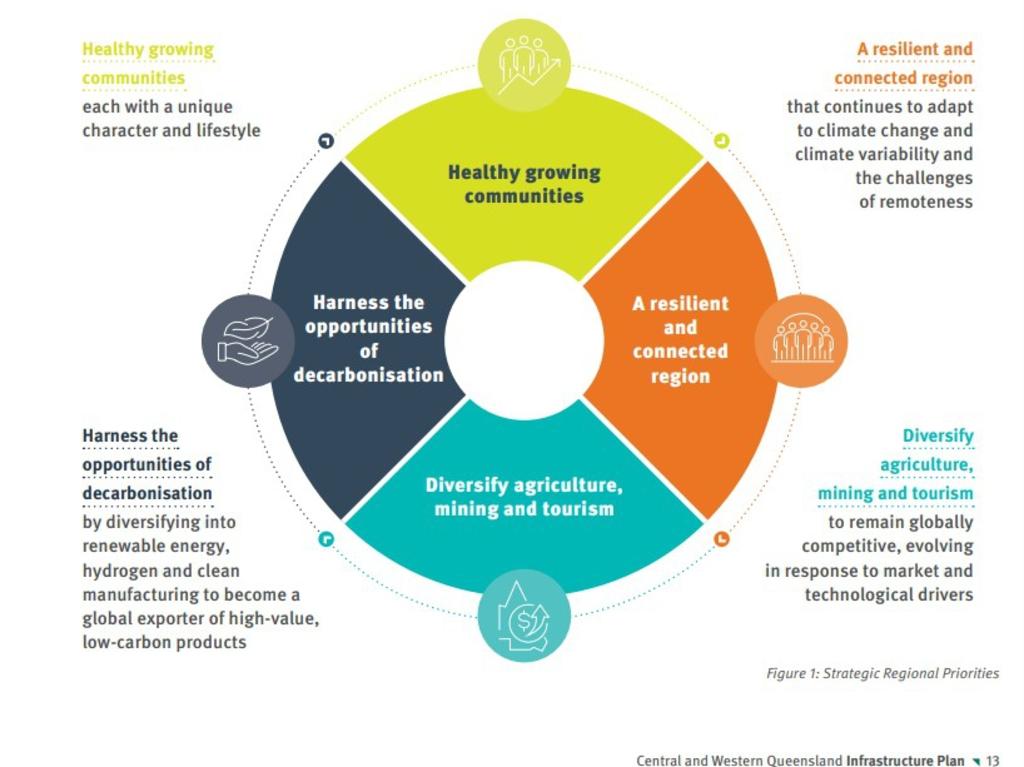
Alongside harnessing “the opportunities of decarbonisation”, the plan lists as its priorities: “healthy growing communities each with a unique character and lifestyle”; “a resilient and connected region that continues to adapt to climate change and climate variability and the challenges of remoteness”; and diversifying agriculture, mining and tourism “to remain globally competitive” amid market and technological change.
HEALTHY, GROWING COMMUNITIES
Under this pillar, health, housing, and education and training were the three key foci.
Projects include upgrading ageing healthcare assets and providing aged care facilities, providing “new, innovative and affordable housing for rent or purchase” and ensuring there is accommodation to attract and retain staff.
It also details continued investment in childcare, improving digital and telecommunications infrastructure, and recognising and promoting First Nations languages.
The government will also consider multi-use or shared use facilities where a mixture of public, private and not-for-profit services can operate out of the one location.
And there is a focus on arts, culture, recreation and natural environment infrastructure.
RESILIENT AND CONNECTED REGION
Climate resilience and regional connectivity are the two foundation pillars underpinning this priority.
The plan states climate change is likely to “exacerbate the frequency and severity” of extreme weather events with a forecast of higher temperatures, hotter days, heavier downpours, and “more frequent severe bushfires”.
The plan outlines needing to make regions resilient via “reliable and robust” water, energy and digital infrastructure, as well as “connectivity across road, rail and air transport”.
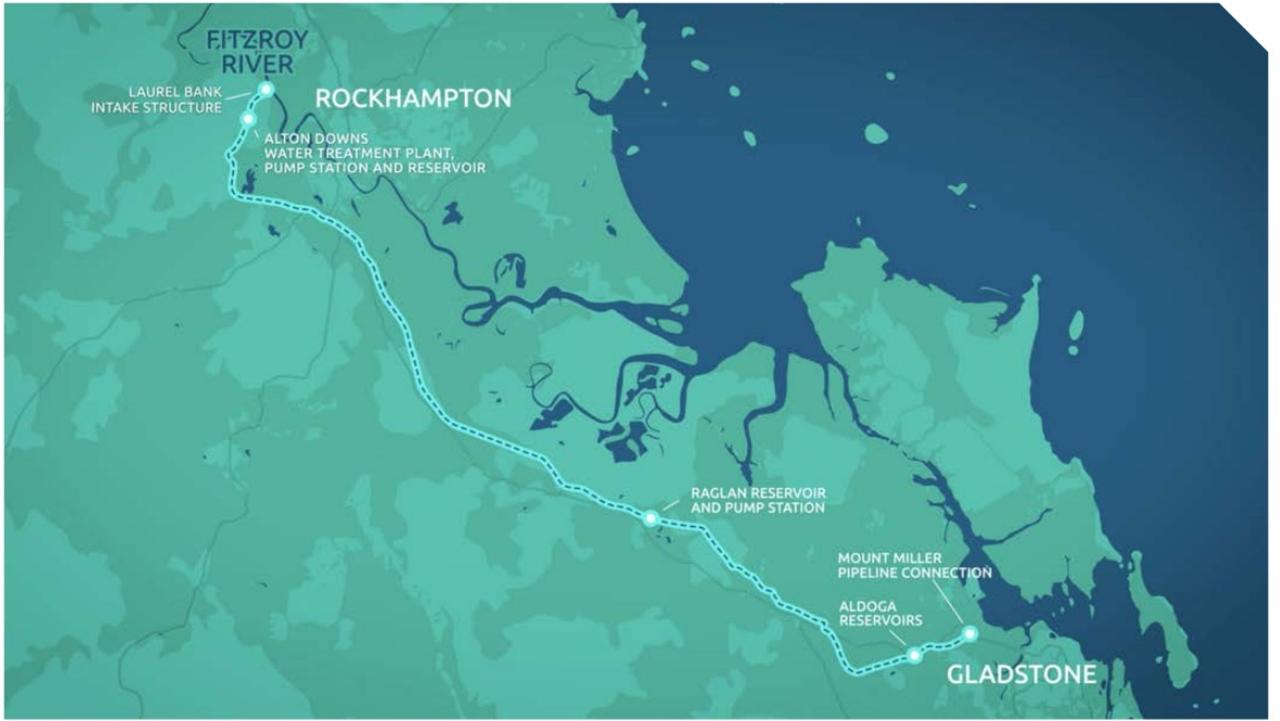
Details include flood mitigation for Rockhampton Airport as well as dams, weirs and pipelines to “support drought resilience”.
Another key project is an Electric Super Highway in Western Queensland which will feature 24 new fast-charging stations with sites at Winton, Longreach, Barcaldine, Blackall, Emerald, and Injune.
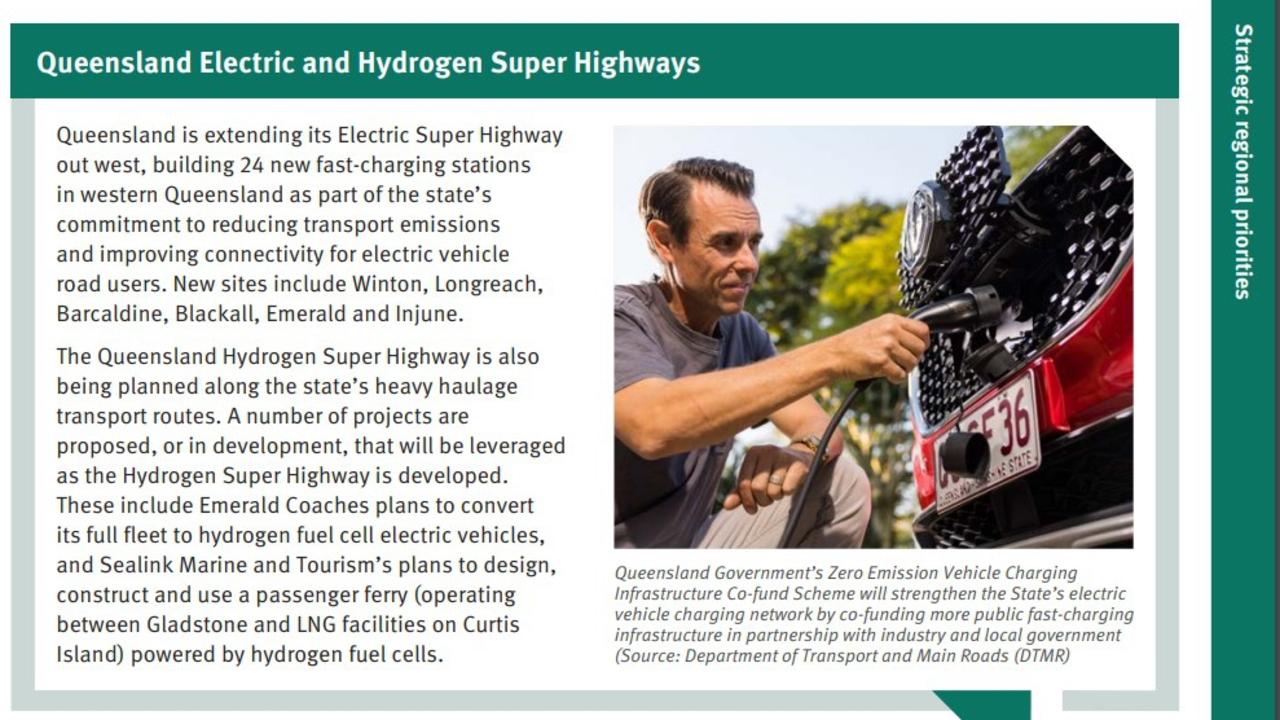
“The Queensland Hydrogen Super Highway is also being planned along the state’s heavy haulage transport routes,” the plan states.
“A number of projects are proposed, or in development, that will be leveraged as the Hydrogen Super Highway is developed.
“These include Emerald Coaches plans to convert its full fleet to hydrogen fuel cell electric vehicles, and Sealink Marine and Tourism’s plans to design, construct and use a passenger ferry (operating between Gladstone and LNG facilities on Curtis Island) powered by hydrogen fuel cells.”
DIVERSIFYING AGRICULTURE, MINING AND TOURISM
With agriculture covering almost 90 per cent of the region, the plan suggests it is “well placed” to offset carbon via carbon markets, carbon farming and carbon capture technologies, to help meet the state’s target of net zero emissions by 2050.
“The shift to a low-carbon and nature positive economy presents significant opportunities for new industries to grow,” the plan states, adding that bolstering climate and environmental credentials will boost access to “premium and sensitive markets” as well as “maintain access to investment capital”.
Two key agricultural projects include the multimillion dollar redevelopment of the Longreach Saleyards into the Western Queensland Livestock Exchange, and the flagship Central Queensland Smart Cropping Centre in Emerald.
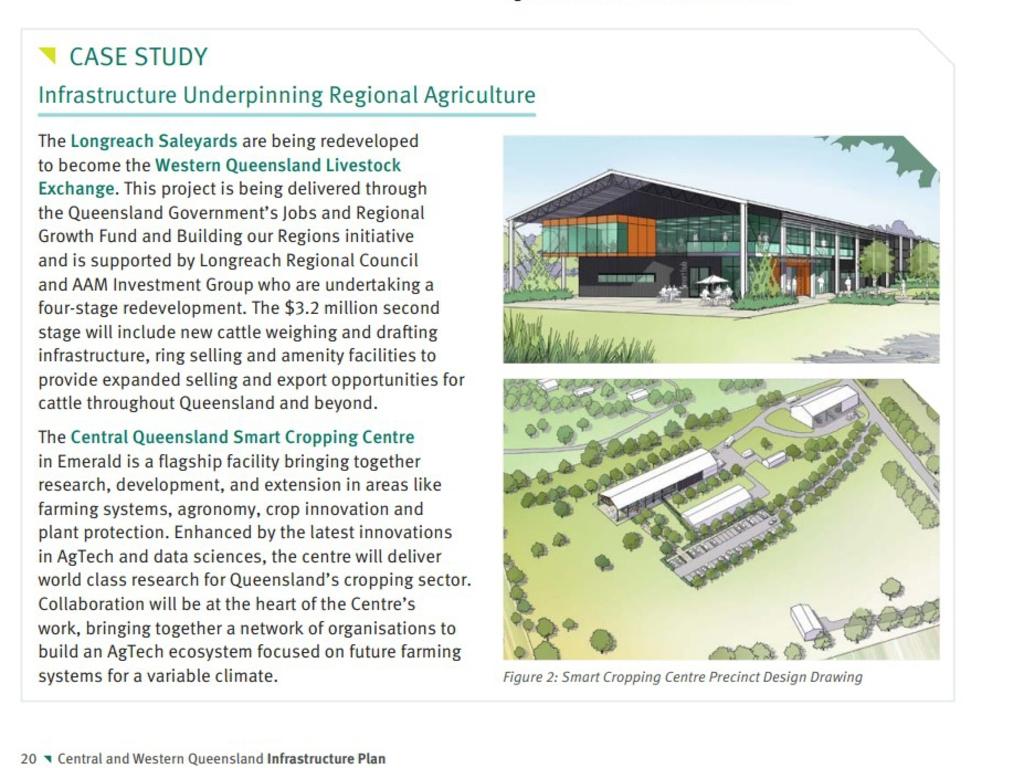
The plan recognises the region covers part of both the Bowen and Galilee basins which offer coal as well as many rich minerals.
It also details the region’s potential to tap into resources like sand and quarry rock construction materials “to meet future market demand for infrastructure projects” as well as expand on its natural gas extractions, including transporting gas from the Callide Infrastructure Corridor State Development Area to plants on Curtis Islands.
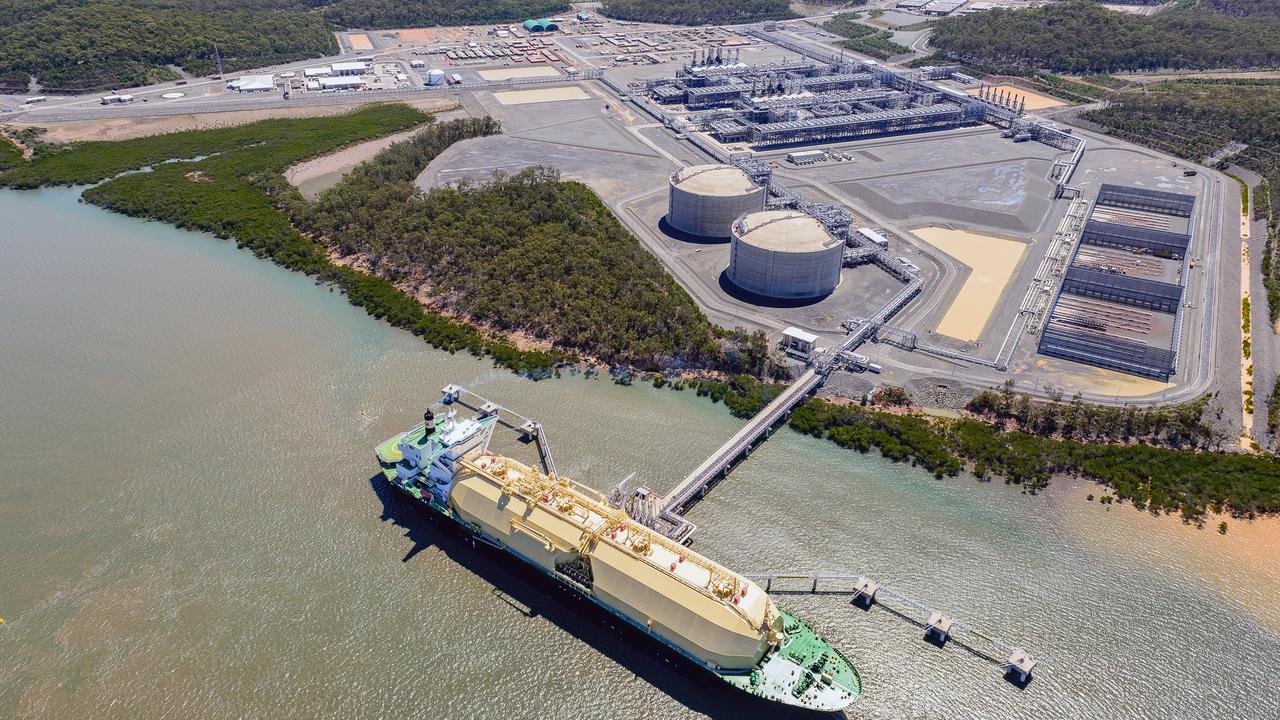
Then there is the Bajool Government Magazine which the CWQIP states is “one of the most strategically important explosives reserves in Australia”.
For tourism, the plan spruiks “significant growth potential”, particularly on the outback family, drive and fly-drive markets.
It details “new accommodation and development of authentic experiences” that reflect the “unique characteristics and heritage” of the region, while outlining investment on sealing and upgrading outback roads.
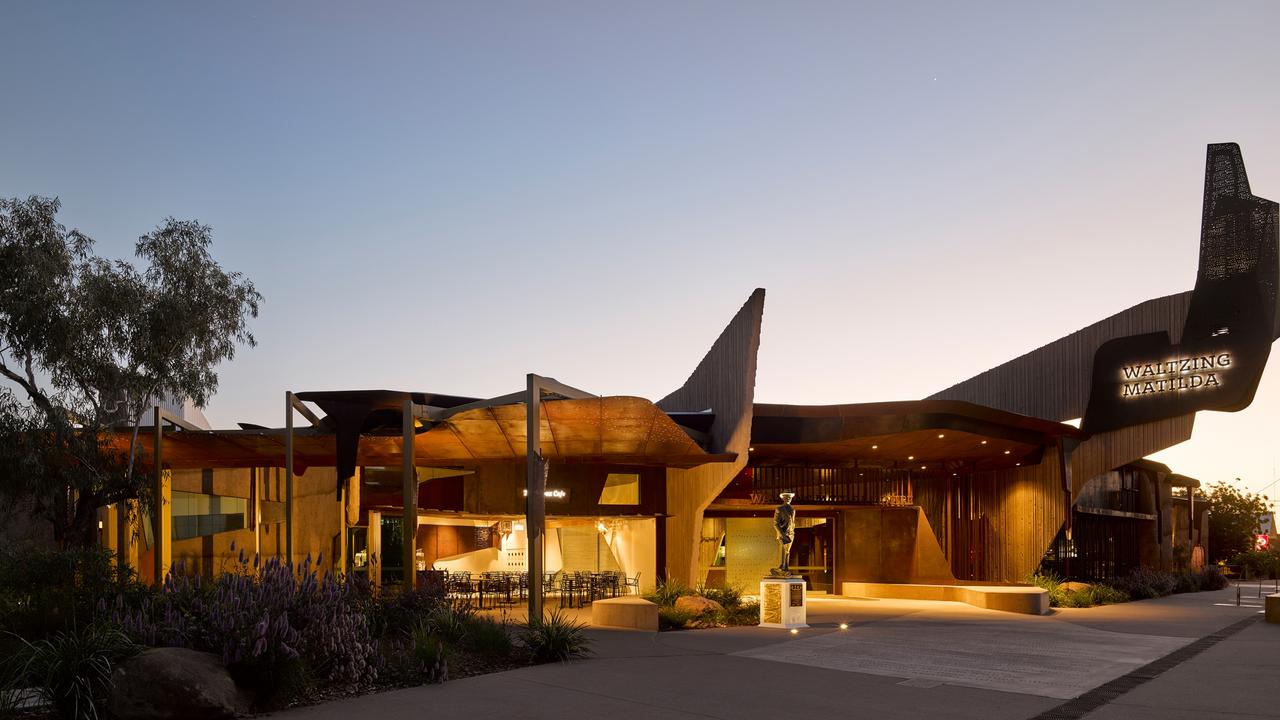
“The region has the potential to build on its range of eco, adventure and authentic First Nations cultural experiences, historic towns, homesteads and mining sites, local events and festivals, trails, and place-based attractions such as museums and galleries,” the CWQIP states.

There is also mention of agritourism, and the importance of Southern Great Barrier Reef attractions like Great Keppel Island and the Marine National Park Heron Island.
HARNESSING DECARBONISATION
“The Central and Western Queensland region has significant solar and wind resources and is in a strong part of the electricity network, facilitating the supply of existing and future industries,” the CWQIP states.
“The Queensland Energy and Jobs Plan and the Queensland SuperGrid Infrastructure Blueprint identify the Central Queensland Renewable Energy Zone region as an area for large-scale renewable energy development.”
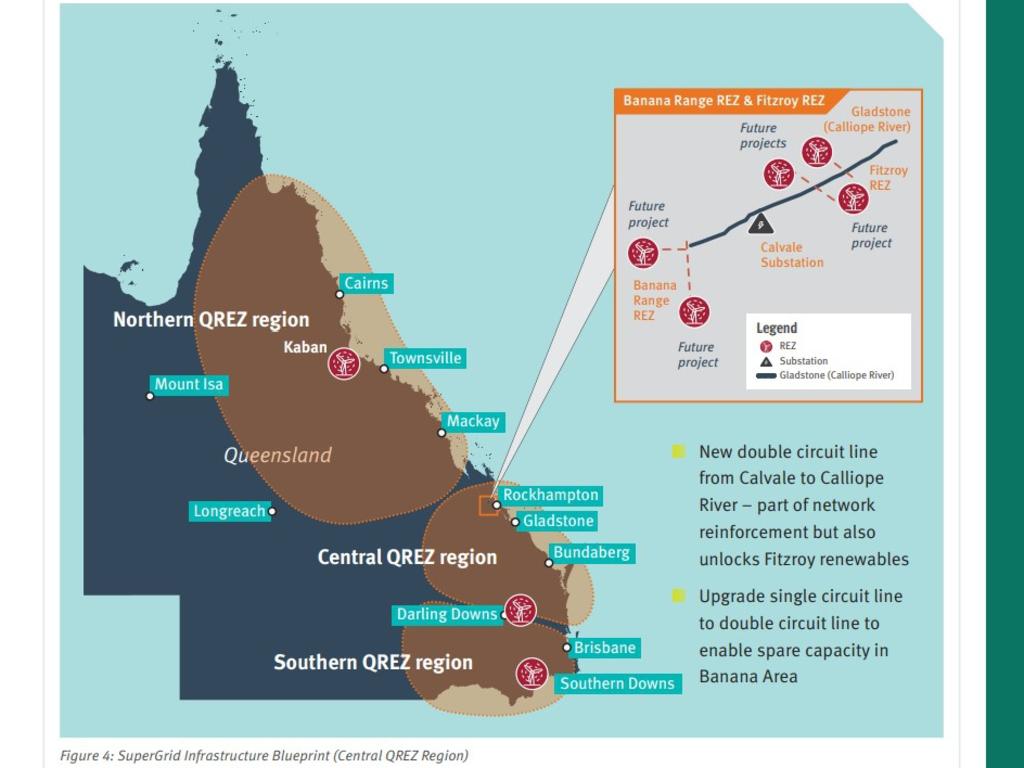
Key projects in the decarbonisation priority include Powerlink investing $365m to “unlock” up to 3.3 gigawatts of additional renewable energy capacity to connect to Queensland’s SuperGrid, and expanding Gladstone’s renewable hydrogen industry and exports.
The plan states Gladstone will become a “hydrogen and renewables manufacturing superpower” via the Fortescue Future Industries’ Green Energy Manufacturing Centre which will manufacture electrolysers, wind turbines, solar panels, and batteries.
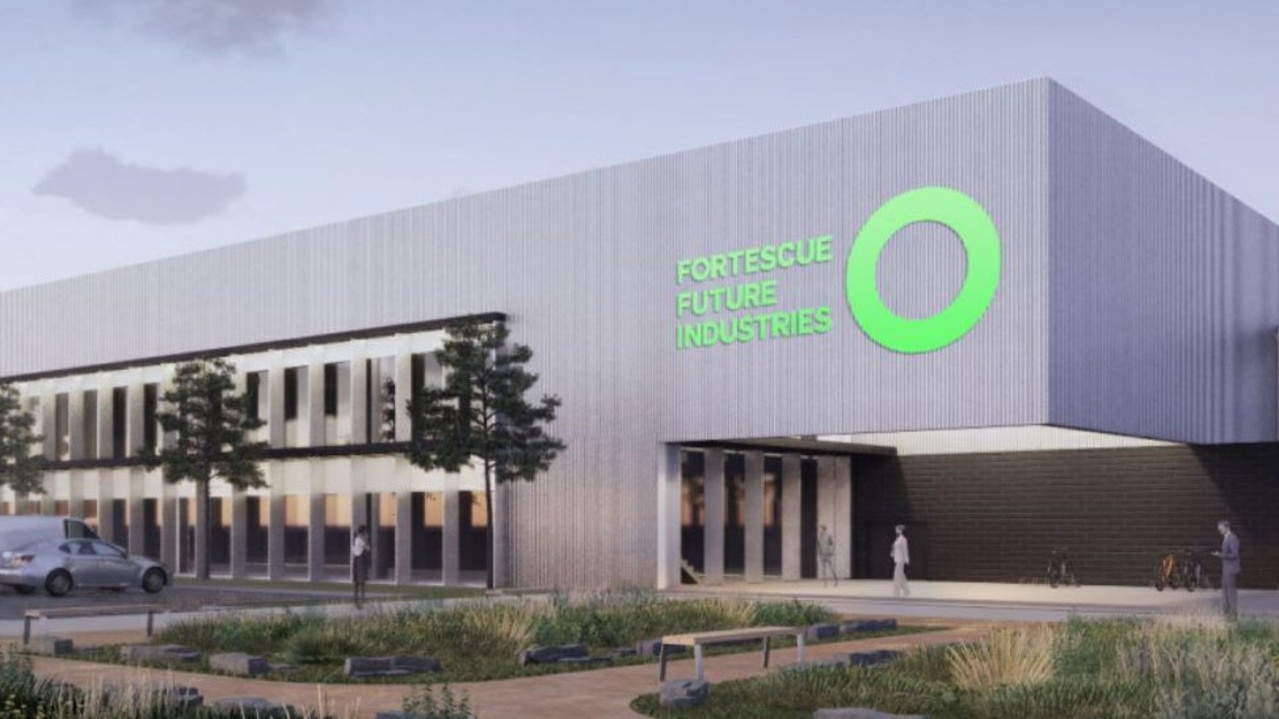
“GEM will be the first facility in Australia able to make multi-gigawatt-scale electrolysers used worldwide in hydrogen production.”
The plan further states there will be further study into local supply chains to prioritise renewable technologies and help the region’s manufacturers capitalise on renewable energy projects.
Water Minister Glenn Butcher said the infrastructure plan was a road map for unlocking jobs for locals.
“Central Queensland and beyond will be a powerhouse for good jobs in the next decade,” the Gladstone MP said.
“We’re already taking steps to address decarbonisation and climate change and through this plan, our communities can walk with us on the journey.”
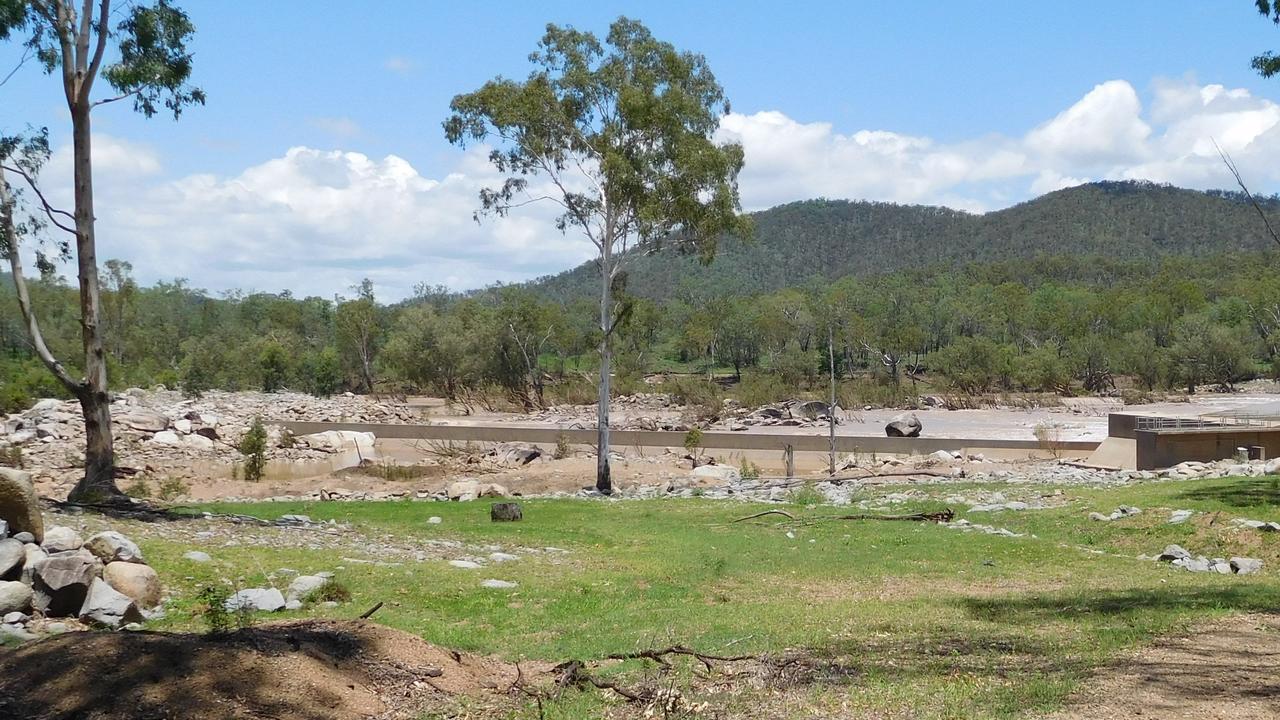
Rockhampton MP Barry O’Rourke said the plan outlined what the future would look like for the region.
“The Palaszczuk Labor Government is already heavily investing in CQ; Rookwood Weir, the Rocky Ring Road and our record health spend are just some examples and this plan lays that all out, along with what the future looks like,” he said.
“The CWQIP serves as a RAP sheet for all the great work underway and will also enable the government and all relevant agencies to look at demand and identify what gaps we can be filling with our fantastic local resources and workforces.”
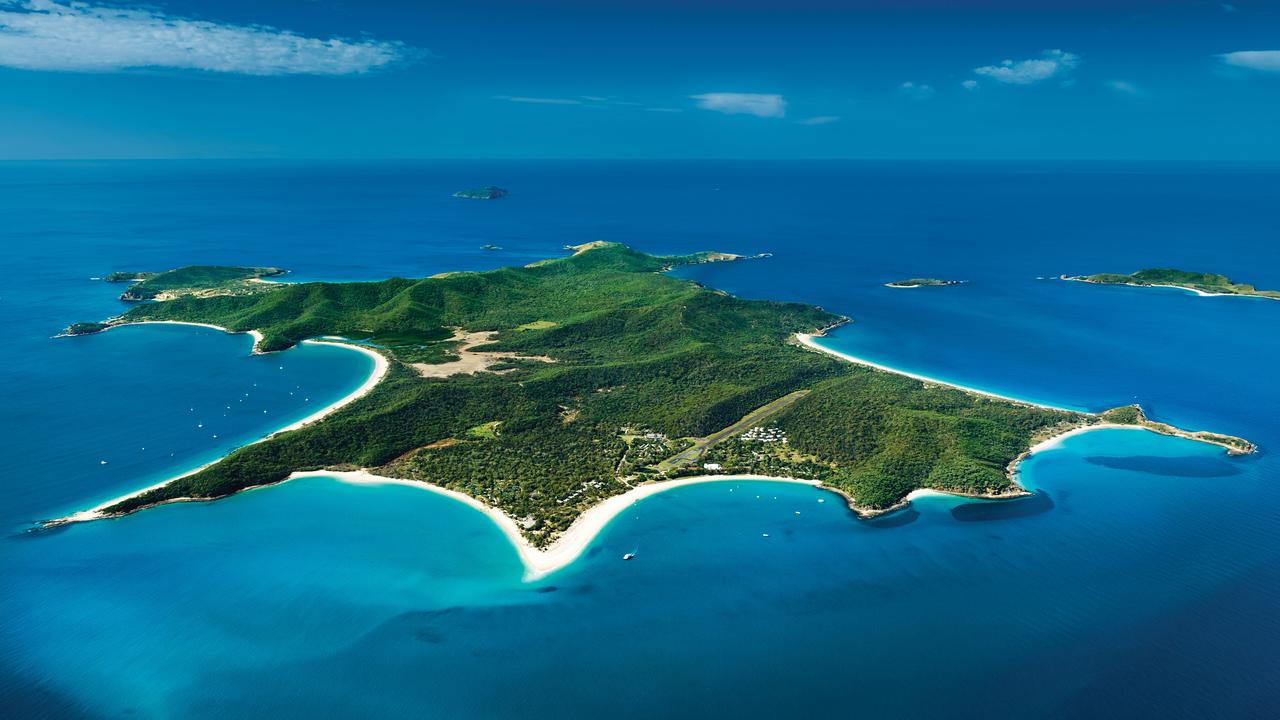
Keppel MP Brittany Lauga said Central and Western Queensland was “highly liveable” and had “significant growth potential”.
“As with all major regional development, new infrastructure and industries will be balanced with the social and environmental aspects to ensure the fantastic lifestyle our region offers is maintained.
“The Palaszczuk Government is intent on supporting essential community facilities including housing, health, education, recreation, as well as arts and culture and this plan does exactly that.”
Six other regions across the state will also receive infrastructure plans over the next two years including Far North Queensland; North and Western Queensland; Mackay, Isaac and Whitsunday; Wide Bay Burnett; Darling Downs and South West; and South East Queensland.
The plans will be reviewed every two years.
More Coverage
Originally published as Inside new Central and Western Queensland infrastructure plan



